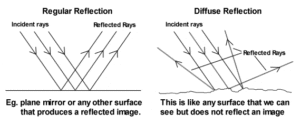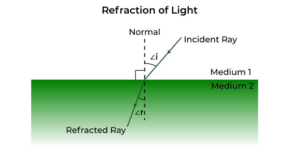A INTRODUCTION TO SOLENOID
Take an insulated copper wire and wrap it tightly and closely on a cylindrical pipe. After some time, take out the copper wire coil slowly out of the cylindrical pipe. What do you see? What is the shape of the copper wire now? Is it looking like a spring or a tightly packed helix?
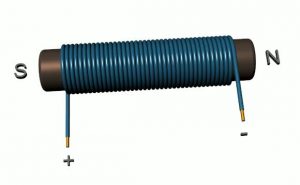
You will be thinking that what is special in that, it is only like a simple spring and looking like a helical coil. Yes, it is a simple helical coil but it is widely used in electrical engineering and it has a wide range of domestic and industrial applications.
In electromagnetism, these simple spring-like components are called solenoids. This coil can be arranged so that it produces a uniform magnetic field in a volume of space when an electric current is passed through it.
So what is a solenoid? What are its types and applications? So in this article, we are going to discuss everything about this. so let’s get started…
WHAT IS A SOLENOID?
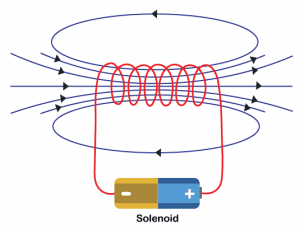
DEFINITION
A solenoid is a type of electromagnet, which is used to generate a controlled magnetic field through a coil which is wound into a tightly packed helix. The coil can be arranged in such that it produces a uniform magnetic field in a volume of space when an electric current is passed through it. See figure above.
It is derived from a Greek word: solen (pipe) and Eiod (coil), which means coiled pipe. The term solenoid was coined in 1823 by André-Marie Ampère to designate a helical coil.

In the study of electromagnetism, it is taken as a coil whose length is substantially greater than its diameter. Here, you can see that the length of the solenoid is larger than its diameter. This makes it cylindrical in shape.
In electrical engineering, the term solenoid may also refer to many transducer devices which convert electrical energy into mechanical energy. When an electric current is supplied to the solenoid, it creates a magnetic field, this magnetic field is used to create the linear motion.
SOLENOID WORKING PRINCIPLE
We know that solenoid is an electromagnet.
So, it usually works on the principle of electromagnetism.
When we supply the electric current through the coil then the magnetic field is generated inside it, if you place a soft metal core inside the coil then the magnetic lines are concentrated on that core, which increases the magnetic induction of the coil as compared to the air core.
Though it creates a magnetic field when supplying electric current, like other magnets, it also has north and south poles and can attract and repel other magnetic materials. See figure (1).
When we place a soft metal core inside the coil, most of the flux lines concentrate only on the core while some of the flux appears at the ends of the coil and a small amount of flux appears outside the coil.
The strength of the magnetic field of the solenoid can be increased by the increased density of the coil turns and or by increasing the electric current through the coil because the strength of the magnetic field due to solenoid is directly proportional to the number of turns per unit length and magnitude of current flowing.
TYPES OF COMMERICAL SOLENOIDS AND THEIR USES
There are various types of Solenoids available in the market based on their material, design, and function. But all the solenoids have the same electrical principles.
- AC Laminated Solenoid
- DC C–Frame Solenoid
- DC D–Frame Solenoid
- Linear Solenoid
- Rotary Solenoid
AC LAMINATED SOLENOID
These types of solenoids have a metal core and a coil of wire. The core of the solenoid is constructed with a laminated metal to reduce the stray current, lamination of the core help in improving the performance of the solenoid.

The special feature of AC laminated solenoid is that it can deliver a large amount of force in the first stroke. Because of this, they have a high inrush current (It is an instantaneous high input current drawn by a power supply or electrical equipment when it is turned on).
They are capable of using more strokes than a DC laminated solenoid. It is available in different types of configuration and ranges. When it is in use then they create a clean buzzing sound.
USES OF AC LAMINATED SOLENOIDS
There are various uses of AC laminated solenoid. Some of them are listed below:
- Medical equipment
- Locks
- Vehicles
- Industrial equipment
- Printers
- And in some of the household appliances
DC C-FRAME SOLENOID
This solenoid is called C-Frame solenoid because it has a metal frame in the shape of the letter C which is covered around the coil. It is used in various day-to-day applications because of its more controlled stroke operation. Although it is said to be a DC solenoid it can also be used in equipment designed for AC power.
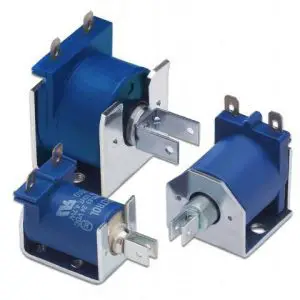
USES OF DC-C FRAME SOLENOID
It has various uses, some of them are listed below:
- Gaming machines
- Photographic shutters
- Scanners
- Circuit breakers
- Coin counters
- Bill changers.
DC-D FRAME SOLENOID
DC-D Frame solenoid has a two-piece frame covering the coils forming a rectangular shape. They have similar function like a C-frame solenoid therefore, it can also be used with AC power and has a controlled stroke operation like C-Frame solenoid.
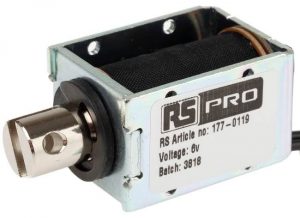
USES OF DC-D FRAME SOLENOID
It has also various uses, some of them are listed below:
- Gaming machines
- ATM machines
- Blood and gas Analyser
LINEAR SOLENOID
Linear solenoids are very common among people. It consists of a coil of wire which is wrapped around a movable metal core called a plunger. It is used to apply the pulling or pushing force to a mechanical device. The metal rod (plunger) is allowed to freely move in or out of the cylindrical coil depending on the current applied.
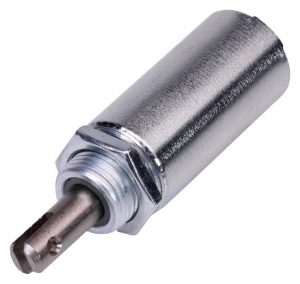
USES OF LINEAR SOLENOID
It is used in the automation and highly secured door mechanisms and in the starter motors of cars & bikes.
ROTARY SOLENOID
It is a special type of solenoid which is used for various applications. It is commonly used where there is a need for an easy automatic control process. It works on the same principle as the other solenoids works and has the same elements, a coil, and a metal core.
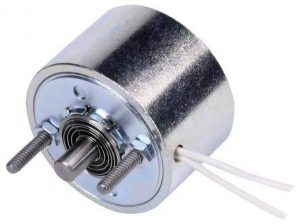
The metal core of this solenoid is mounted to a flat disk and has small grooves under it, The groove’s size exactly matches with the slots in the body of the solenoid. It also has ball bearings to make the smooth frictionless motion.
When the solenoid starts running then the core is pulled into the body of the solenoid and the disc core starts rotating. A spring is placed in between the core and the body of the solenoid. Once the power supply is detached from the solenoid, the spring pushes the disk core to its original position.
USES OF ROTARY SOLENOID
This type of solenoid is stronger than the other types of the solenoid. These are originally designed for defense mechanism but nowadays it is commercially being used in many automated industrial mechanisms such as laser and shutter.
APPLICATIONS OF SOLENOID
Some applications of solenoid is given below:
- It is used in electromagnets, inductors, antennas, solenoid valves, etc.
- It is also used in medical equipments, locking systems, and industrial use.
- The solenoid is also used in many different appliances and products like computer printers, fuel injection gear which is used on cars and in various industrial settings.
- Solenoids are also used to make residential doorbells whereby armature strikes metal chime bars when coils get electrified.
- Electromechanical solenoids are commonly used in electronic paintball markers, pinball machines, dot matrix printers, and fuel injectors.
- It is also used in particular types of secure door locking systems.
- Electrically, a solenoid is used to control a valve, for example, the solenoid core is used to apply mechanical force to the valve.
- One of the main advantage of the solenoid is that whenever an electricity is applied, it show the immediate the reaction.
- The quick response is one of the most significant reason due to which it is widely using in electrical engineering.
So this is all about solenoid, definition types and its applications. Stay tuned with Laws Of Nature for more useful and interesting content.






